We Arrive in the Yukon…Dawson City!
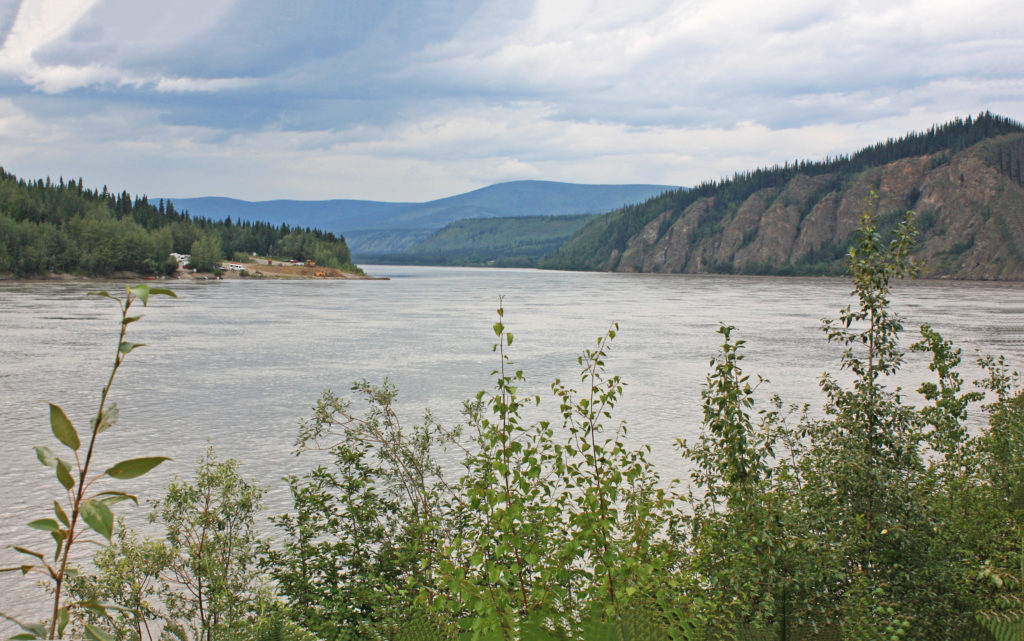
The mighty Yukon River.
July 24, 2017
At 9 a.m. we boarded our coach bus for a ride to the Fairbanks International Airport. We were on our way to Canada and the Yukon territory. When we arrived at the airport we went through TSA with passports in hand. We boarded an Air North chartered Boeing 737 for an hour-long flight to Dawson City. Our airplane flew through a cloudy sky with no picturesque views out the windows and landed at 1 p.m. local time on a gravel runway. We deplaned and proceeded immediately through Canadian customs.
Within ten minutes we were dropped off at the hotel, which was located in the center of Dawson City and part of a multi-building complex. Our building was named “Gertie’s Wing”. After getting settled, map in hand, we walked out to the south end of Front Street, the main street that runs along the town waterfront. We were ready to explore Dawson City! Dawson city is small enough that you can easily walk around it.
Dawson City was the center of the Klondike Gold Rush. The gold rush was touched off with the August 16,1896 discovery of gold on Bonanza Creek, a tributary of the Klondike River. In July, 1897 the outside world learned of the strike when some newly rich prospectors arrived in Seattle and San Francisco. With the influx of gold seekers, the city population jumped from 800 in 1896 to 30,000 people by 1898.
Today, Dawson City has a population of over 2,000 residents. As the second largest city in the Yukon, tourism and gold mining still continue to provide employment for many. The core of the city is designated as an Historical Complex and selected as a National Historic Site of Canada. Most of the buildings reflect nineteenth century pioneer, boom-town architecture. Several buildings have been restored to their original grandeur along with the wooden boardwalks. Now, all new structures must be built to reflect the historical theme.
Virtually all the roads in Dawson City are dirt with wooden boardwalks instead of sidewalks. Because permafrost underlies the town, the buildings are all raised up a couple of feet above the ground to permit air flow. That design minimizes heat transfer to the soil and helps prevent failure of the building foundations due to permafrost thawing. Many of the buildings have false fronts facing the street. The fronts are neat, painted bright colors, and larger than the actual building behind them. These were often erected to give simple wooden buildings the allusion of influence and importance.
At 3 p.m. we stopped at the Information Center and signed up for a walking tour of the town. Our guide was a tall, thin, late-middle aged woman wearing a black period blouse, a long skirt, and a wide brimmed straw hat. She said that she had moved to Dawson City years ago and lived year-round across the Yukon River in West Dawson in a dwelling that was off the grid–no water, sewer, or electrical services–just as all others live in West Dawson. This was her summer job working for Parks Canada as a thematic interpreter.
The purpose of the tour was to relate strange and unusual stories to us as we walked around the town. She also let us into some of the historical buildings that have been restored by Parks Canada. The tour was outstanding and lasted 90 minutes. We were able to visit a saloon that was fully reconstructed based on photographic evidence. It was beautiful–long bar, brass foot rail, period wallpaper, electric fixtures, and private curtained area for games and meetings. We were also able to tour the restored original post office that replaced the original practice of simply dumping out all of the mail and letting thousands of residents find what was addressed to them. At the end of the tour, we walked back down Front Street and found an awesome ice cream store, “Klondyke Cream & Candy”.
After dinner we met Kayli and our group and walked a few blocks to Diamond Tooth Gerties, an old-fashioned saloon with a small casino and live entertainment. We were on our way to see the first show of the evening. The establishment is named after Gertie Lovejoy, one of the most famous of Dawson’s dance-hall queens during the gold rush era. She got her nickname after having a diamond inserted between her two front teeth. Wow, talk about having a million-dollar smile!
The show started at 8:30 p.m. and lasted thirty-five minutes. It consisted of a matronly singer, Gertie, and her four can-can dancers. The period music was lively and got the crowd fired up and clapping. Songs alternated with can-can dances where the dancers whirled, kicked and flashed their colorful skirts. Several times Gertie came out into the audience and serenaded a selected viewer. The dancers came out and each selected a man to allegedly help them backstage. A few minutes later, all appeared on stage with the men in skirts and flowered head attachments, then proceeded to dance in unison. The show was a lot of fun.
After the show was over, most of our group left but Rodge and I elected to get something to eat and stay for the next show at 10 p.m. It was equally entertaining but entirely different. There was a male singer added and the story line related to the Gold Rush era. After all of the dancing and singing subsided we left Gerties at 10:45 p.m. As we walked back to our hotel it was still light out because the day was nineteen hours long with the sunset at 11:45 p.m. It was amazing to be in ”The Land of the Midnight Sun”.
Later,
Kathy
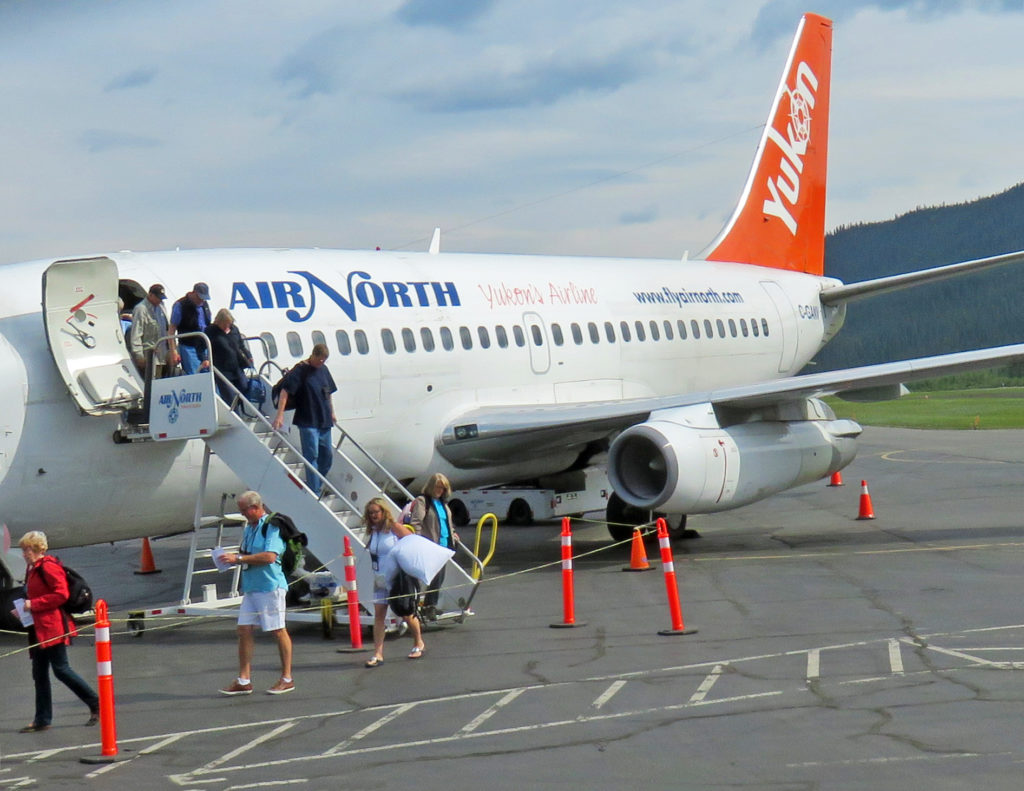
Our Air North flight lands in Dawson City.
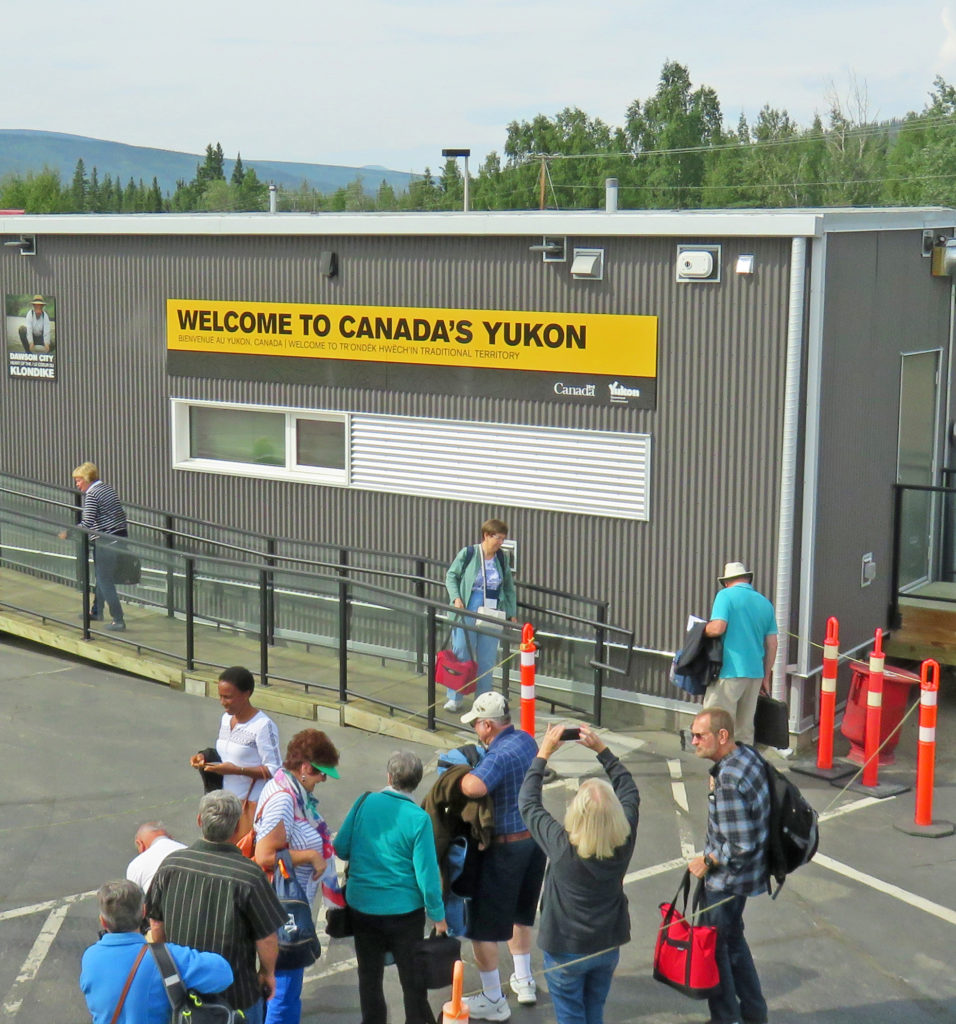
We arrive at 1 p.m. in the Yukon.
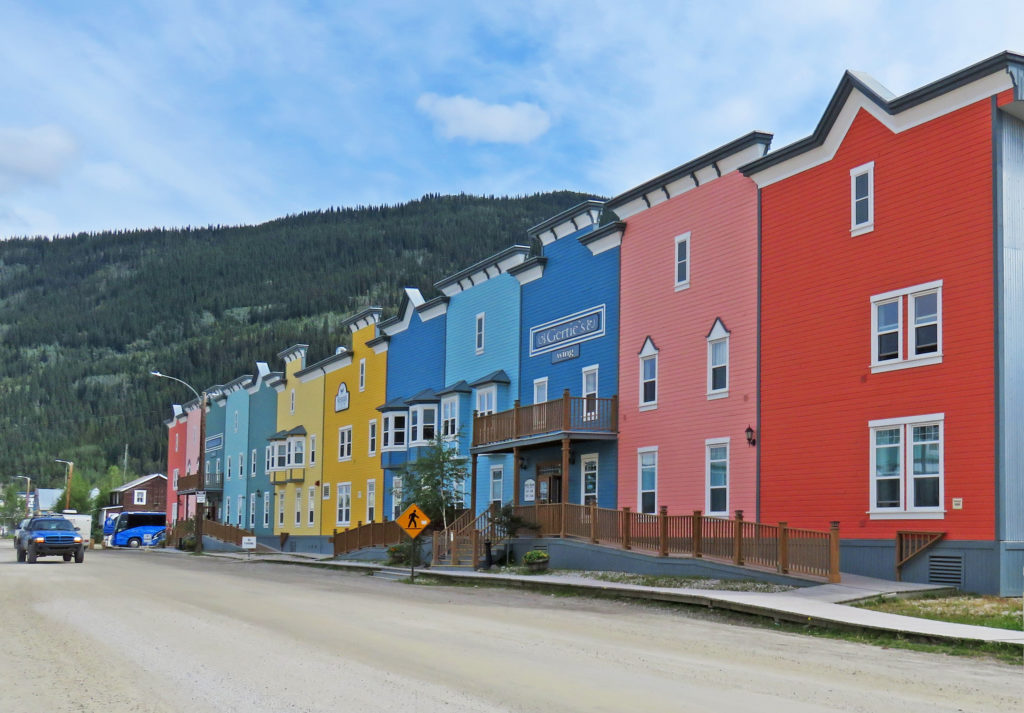
Our hotel was part of a multi-building complex.
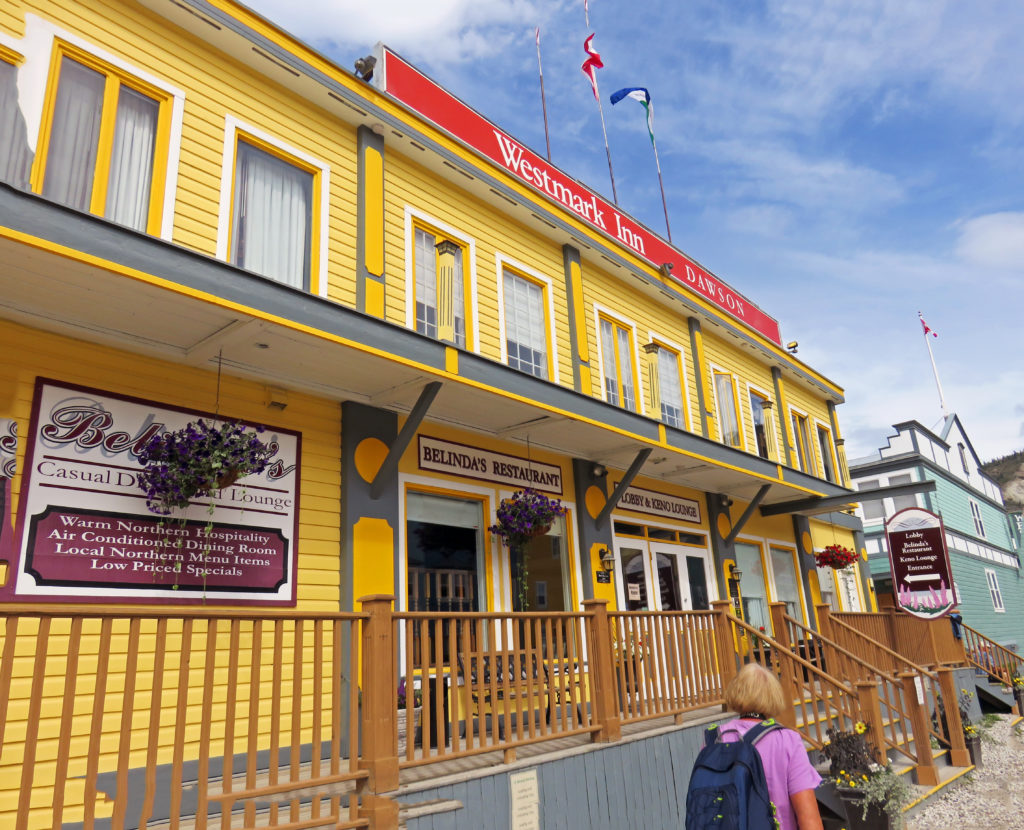
Kathy heading to our hotel’s main building.
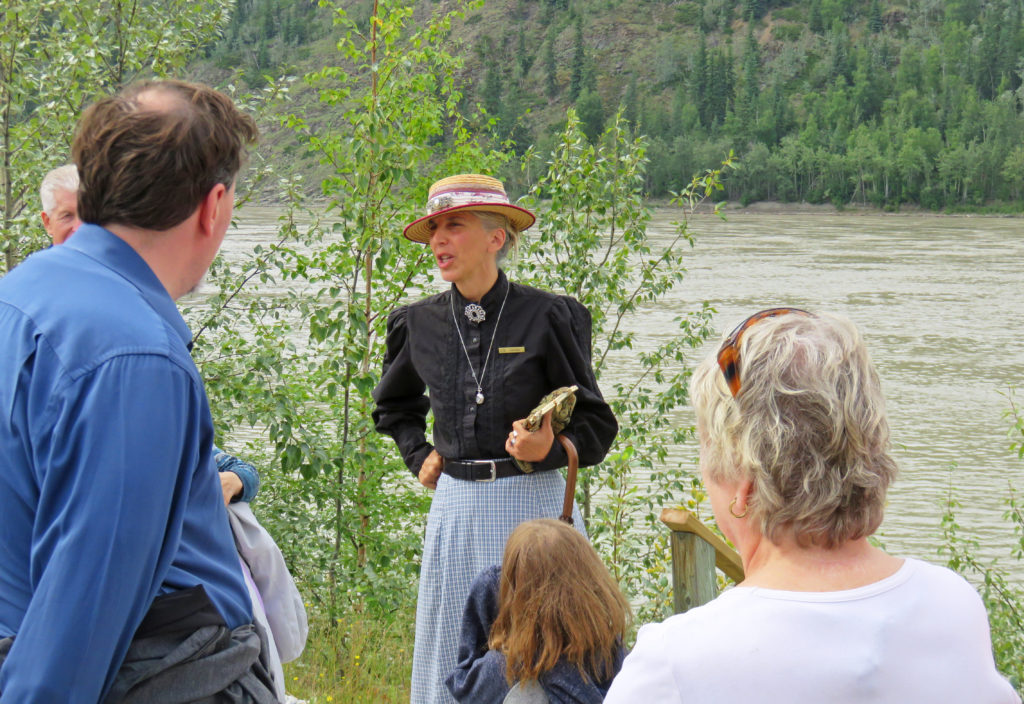
We meet our guide for the walking tour.
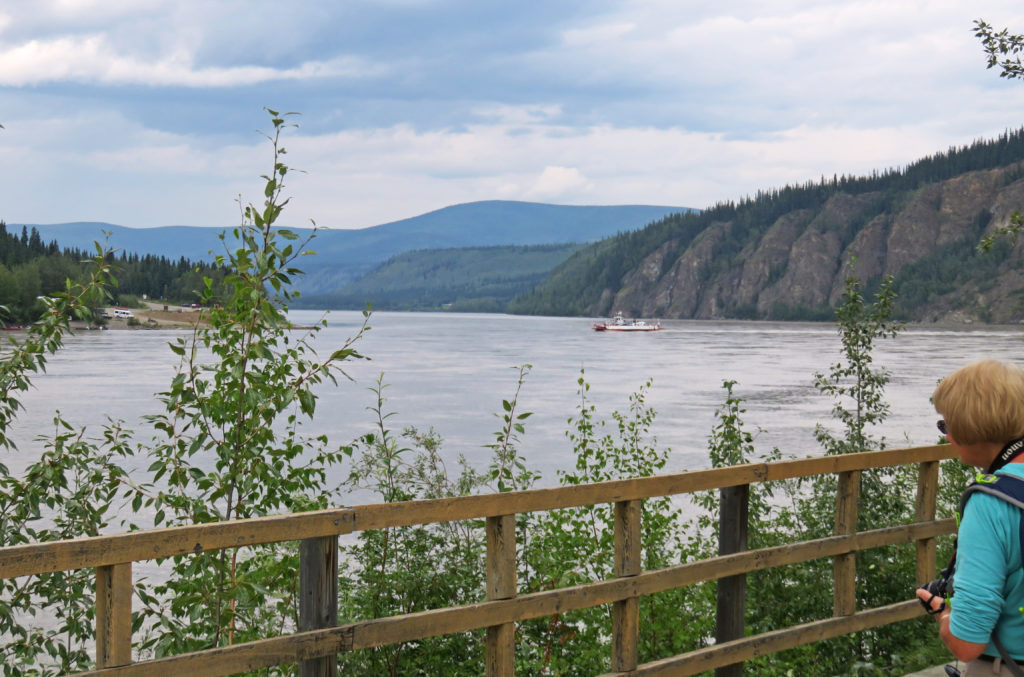
The muddy Yukon River flowing along the waterfront.
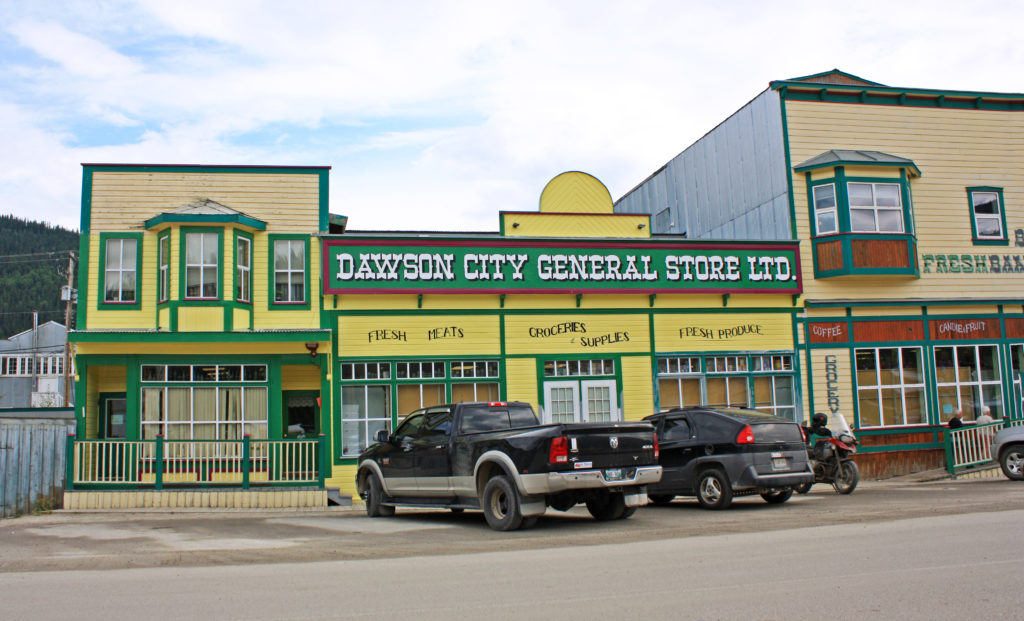
On Front Street, Dawson City’s main street.
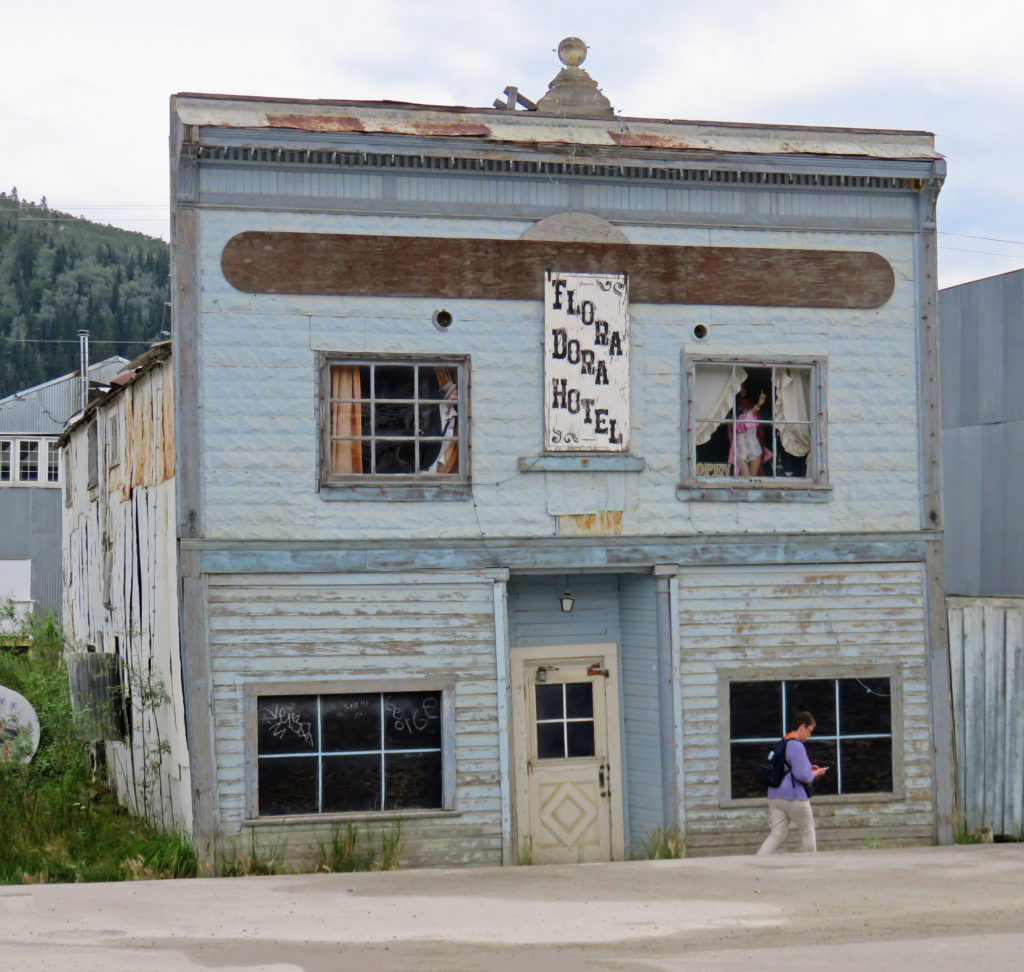
Our digs for tomorrow! Ha, only kidding!
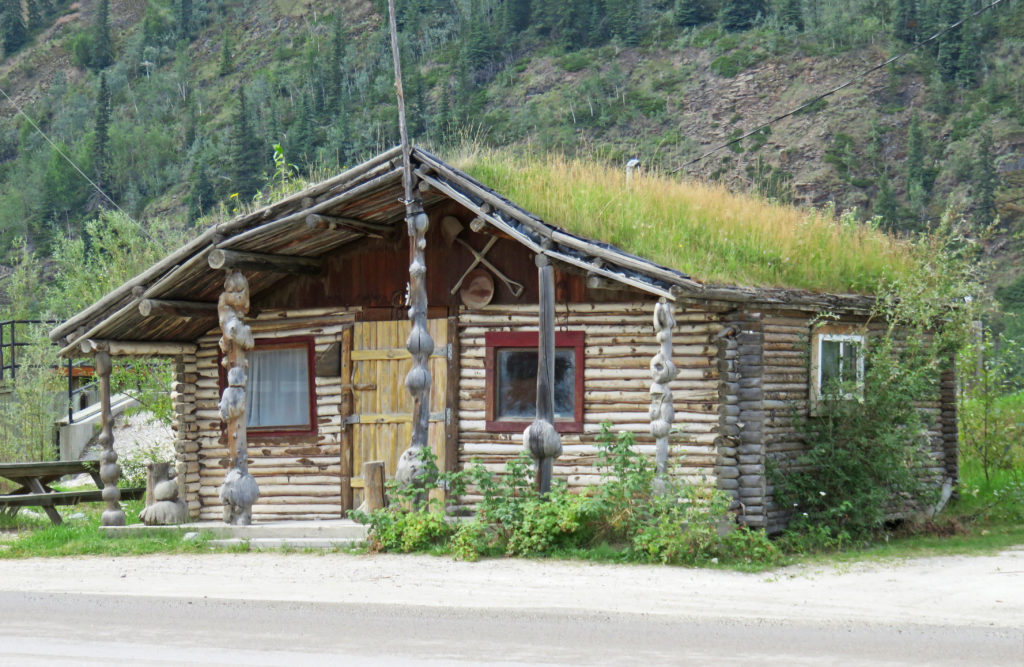
Home Sweet Home!
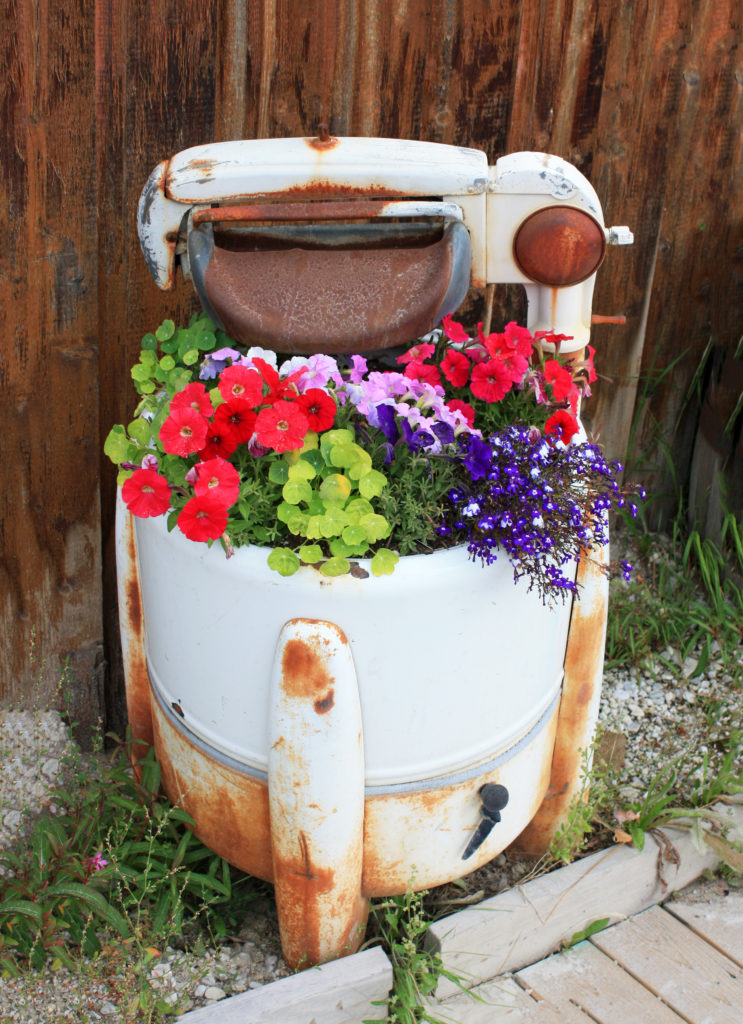
A street side washtub of flowers!
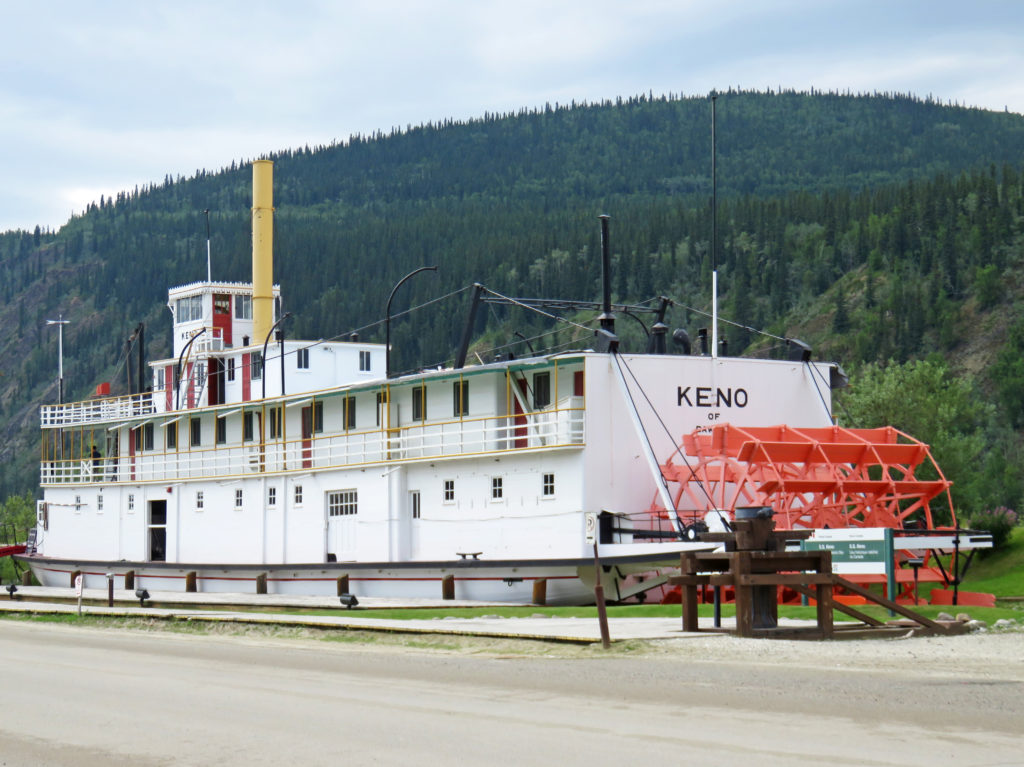
The sternwheeler S. S. Keno became a National Historic Site of Canada in 1962.
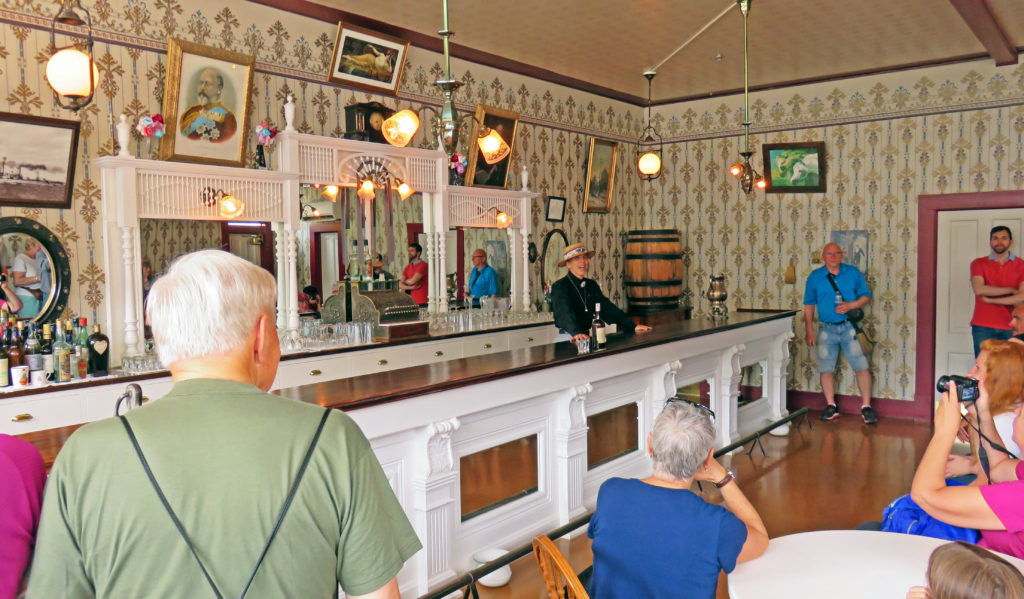
A saloon that was fully reconstructed based on photographic evidence.
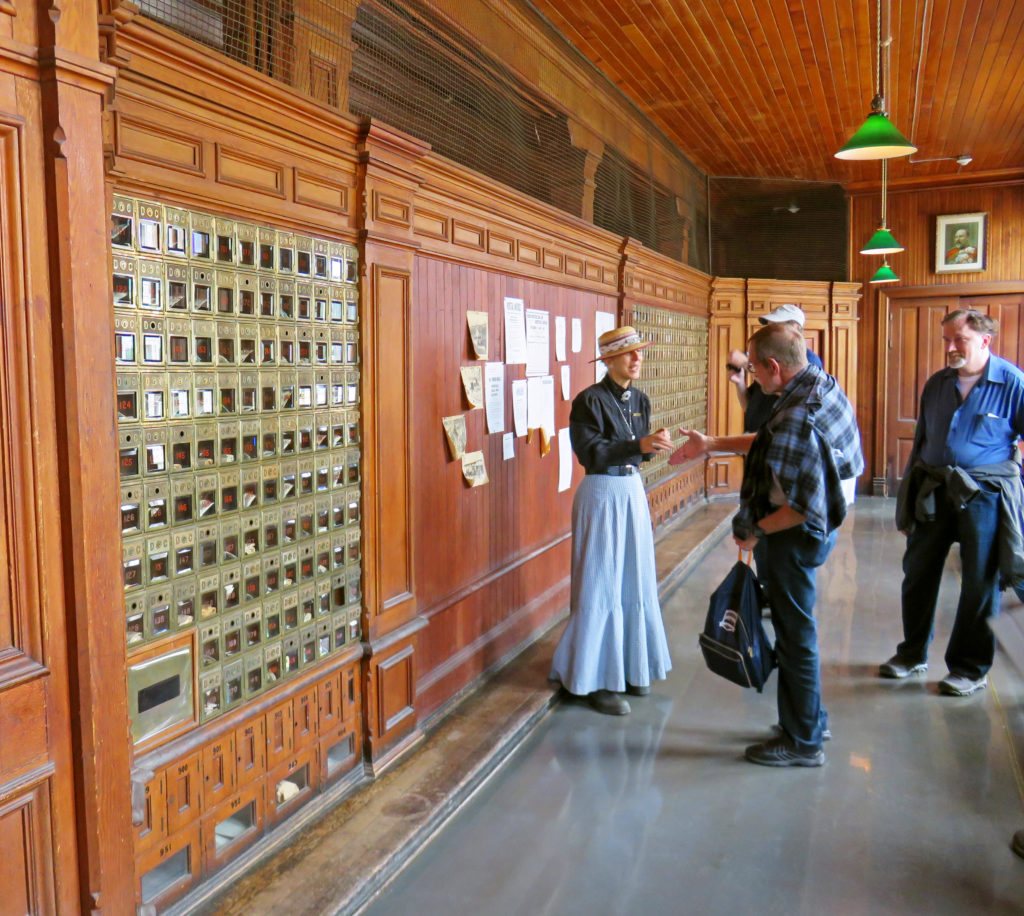
A restored original post office.
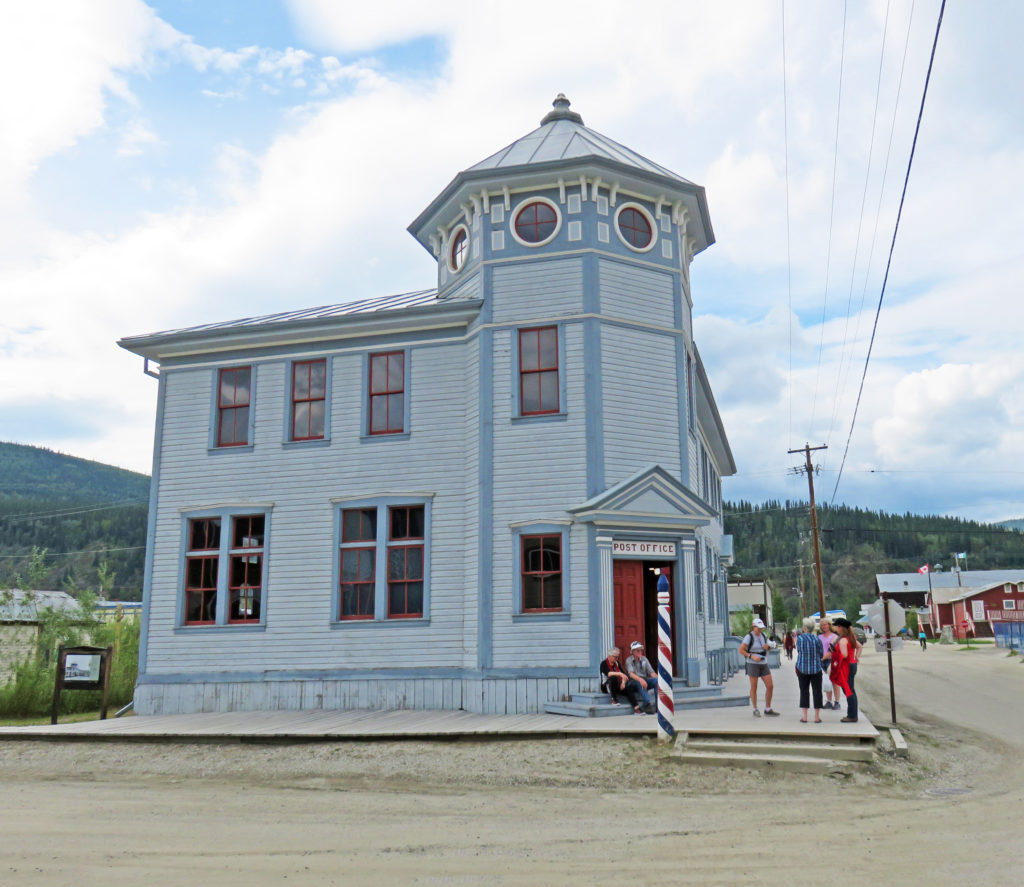
The outside of the restored post office.
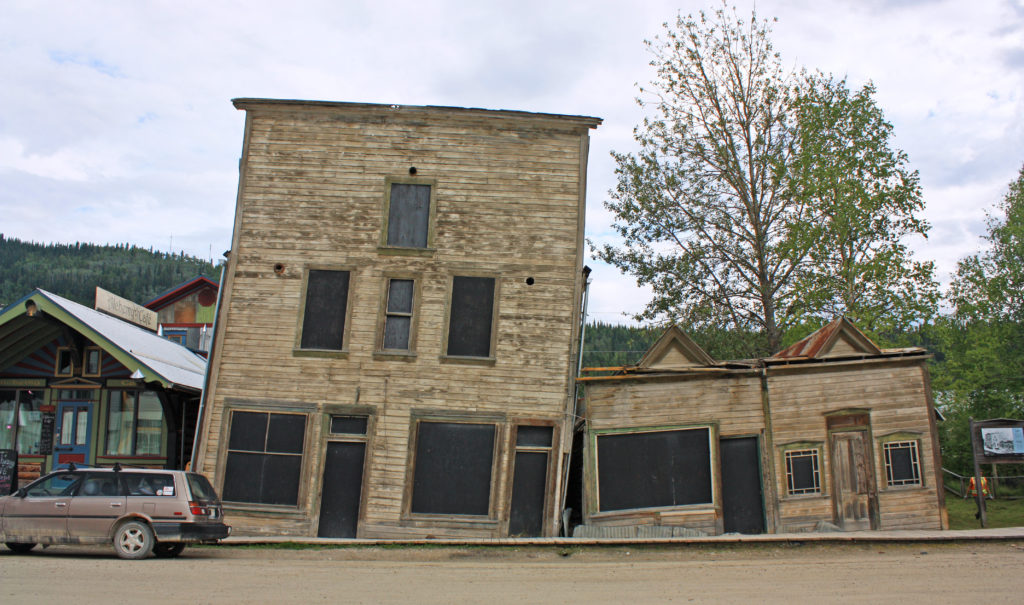
The Kissing Houses are examples of permafrost damage to building foundations.
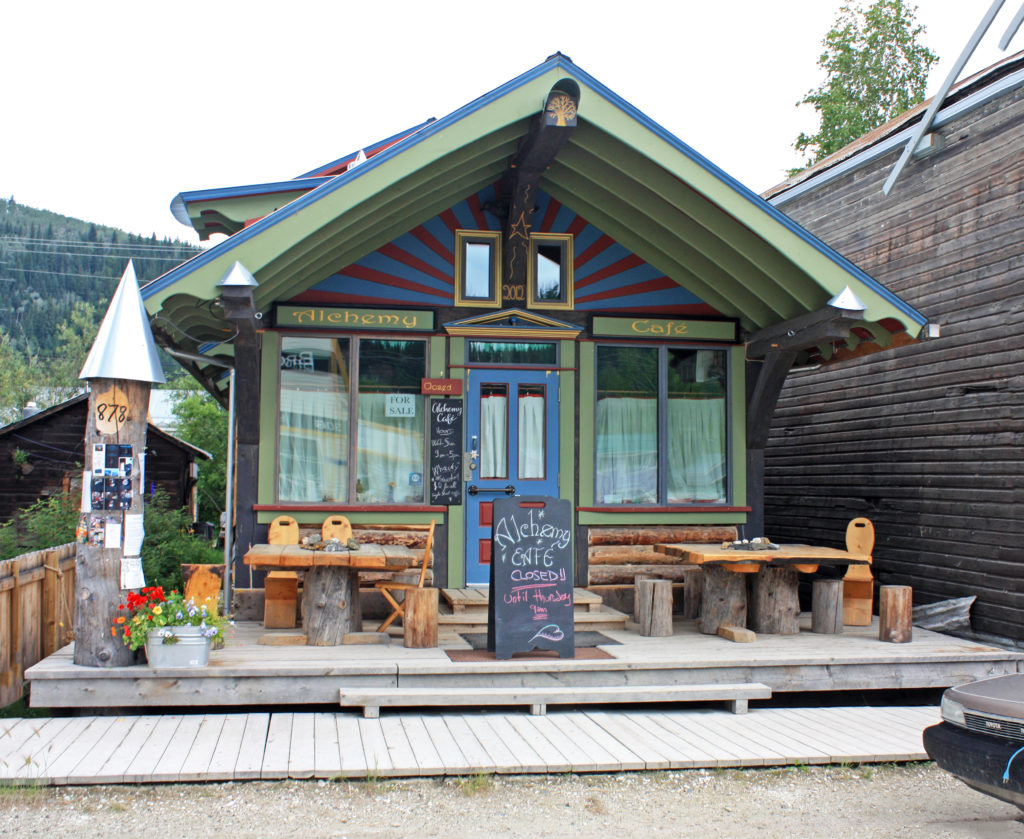
The Alchemy Café, where magic culinary delights appear.
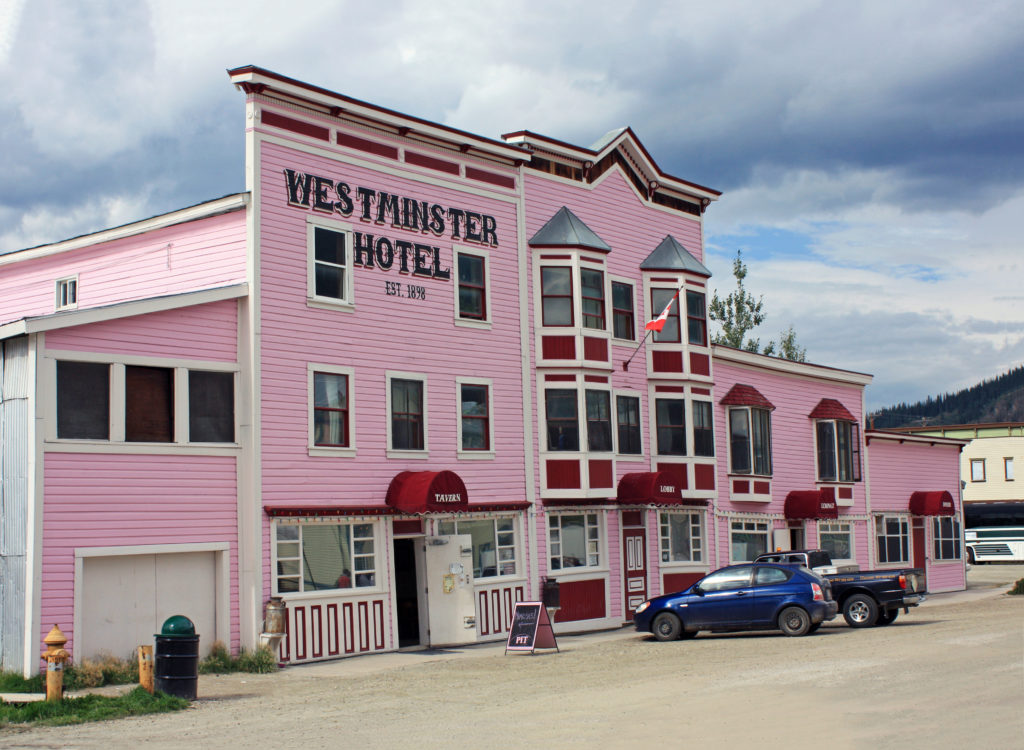
A great side view of the false front on the Westminster Hotel.
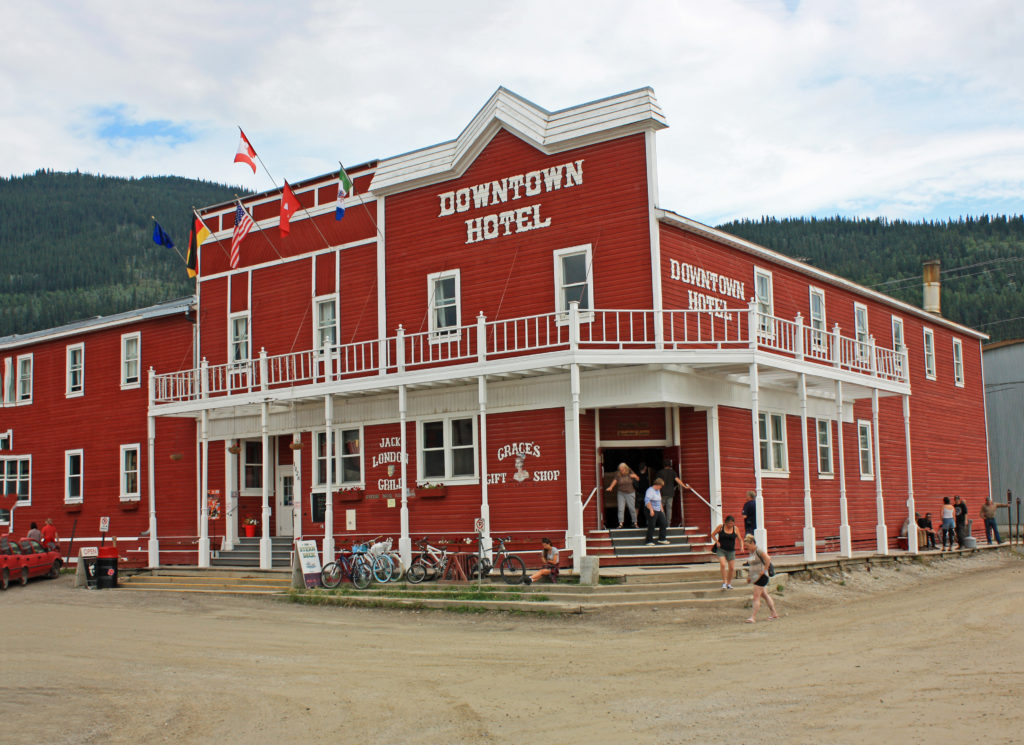
The Downtown Hotel with a false front.
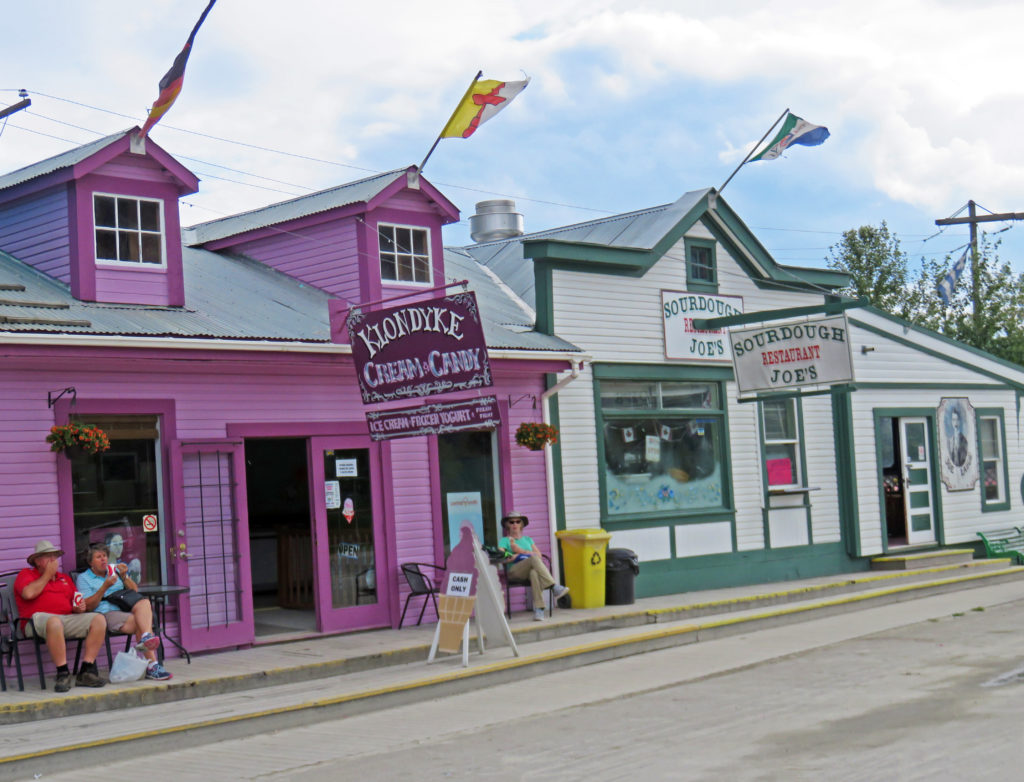
Rodge and I chowed down on ice cream after our tour.
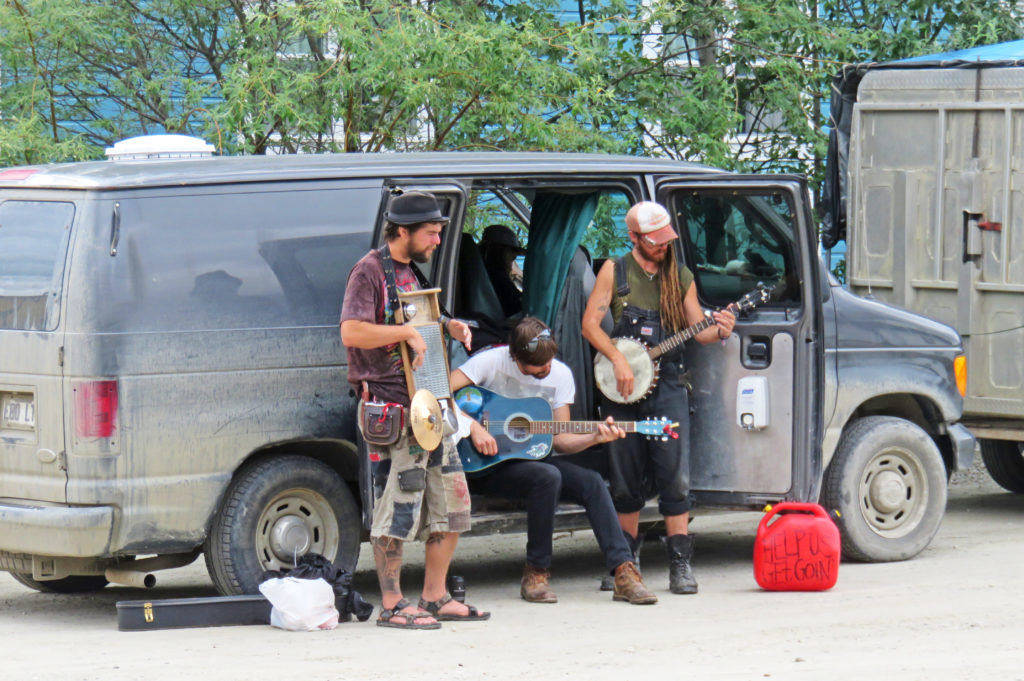
We discover a down-home van side band on our way back to the hotel.
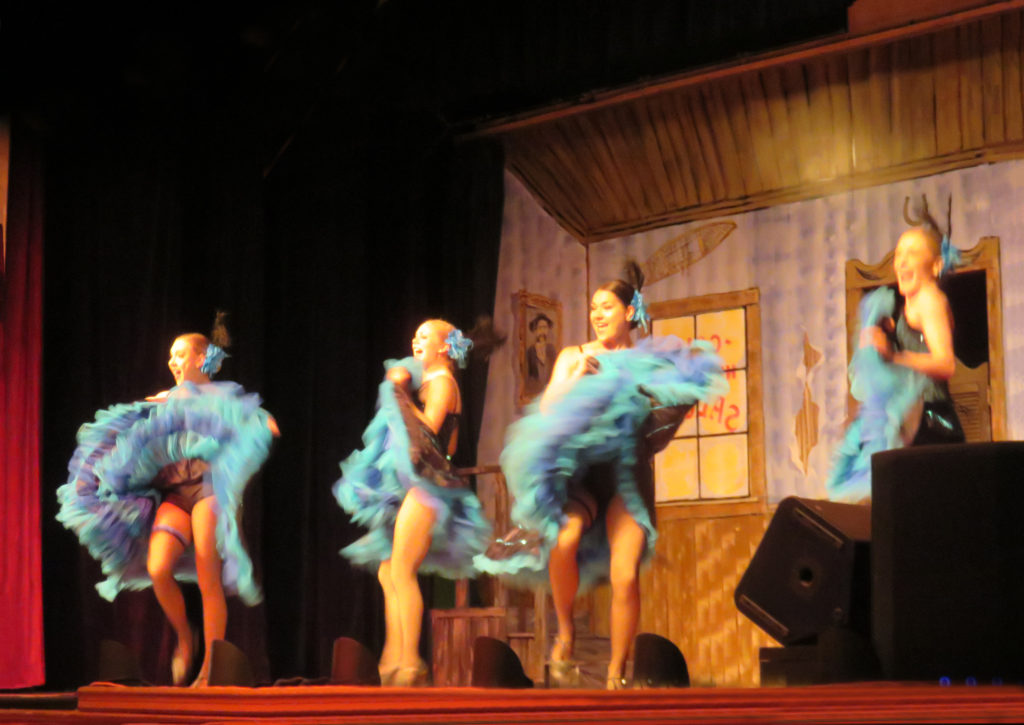
Can-can dancers whirled, kicked and flashed their colorful skirts at Gerties.
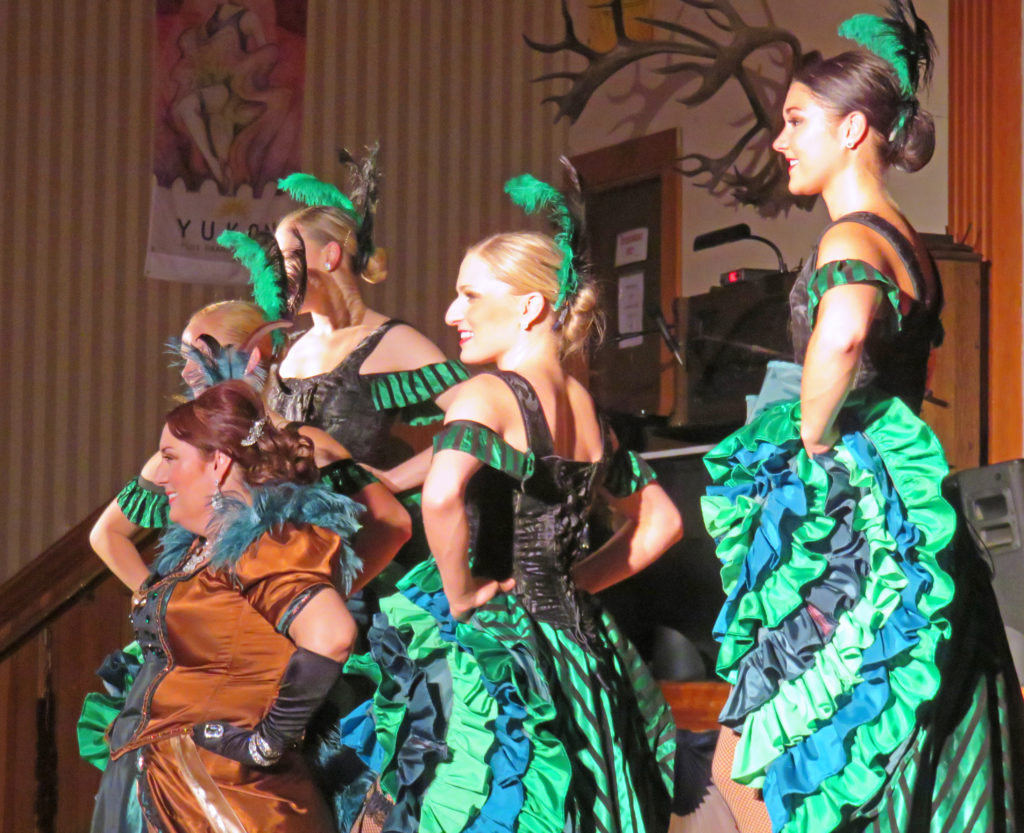
Gertie and her can-can dancers.
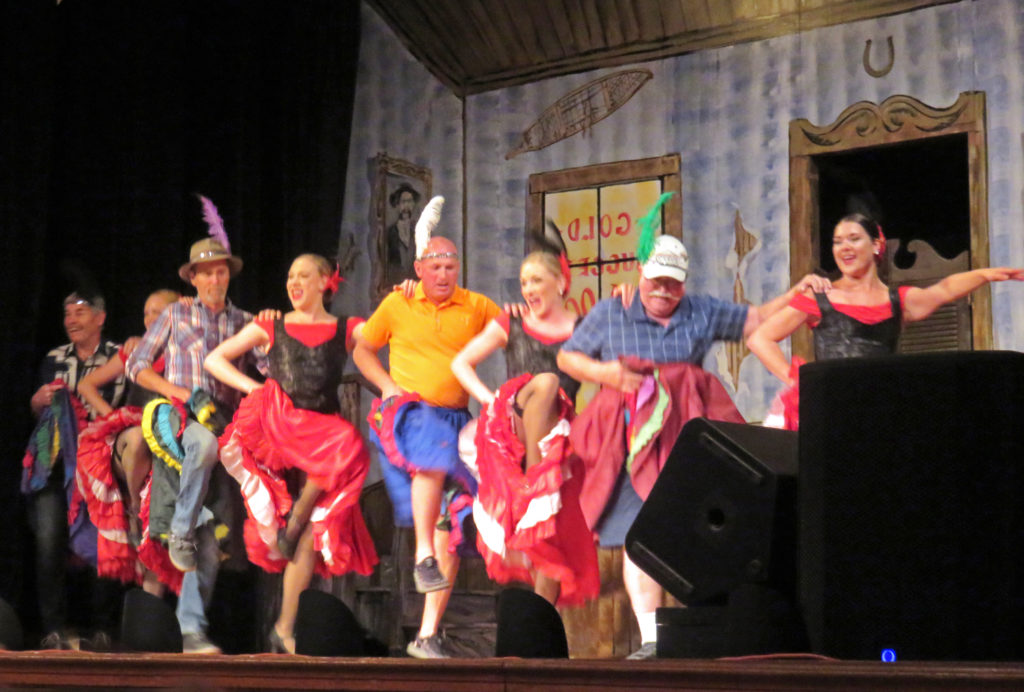
Men in skirts and flowered head attachments dance up a storm.
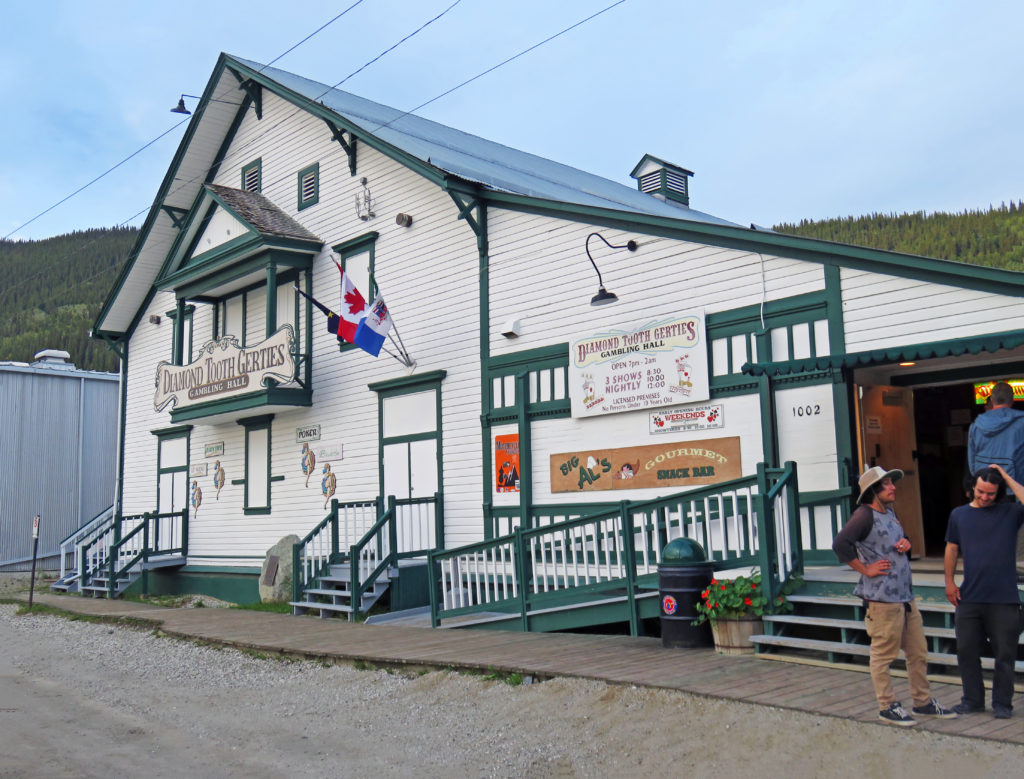
As we left Gerties at 10:45 p.m. it was still light out.


Leave a Reply